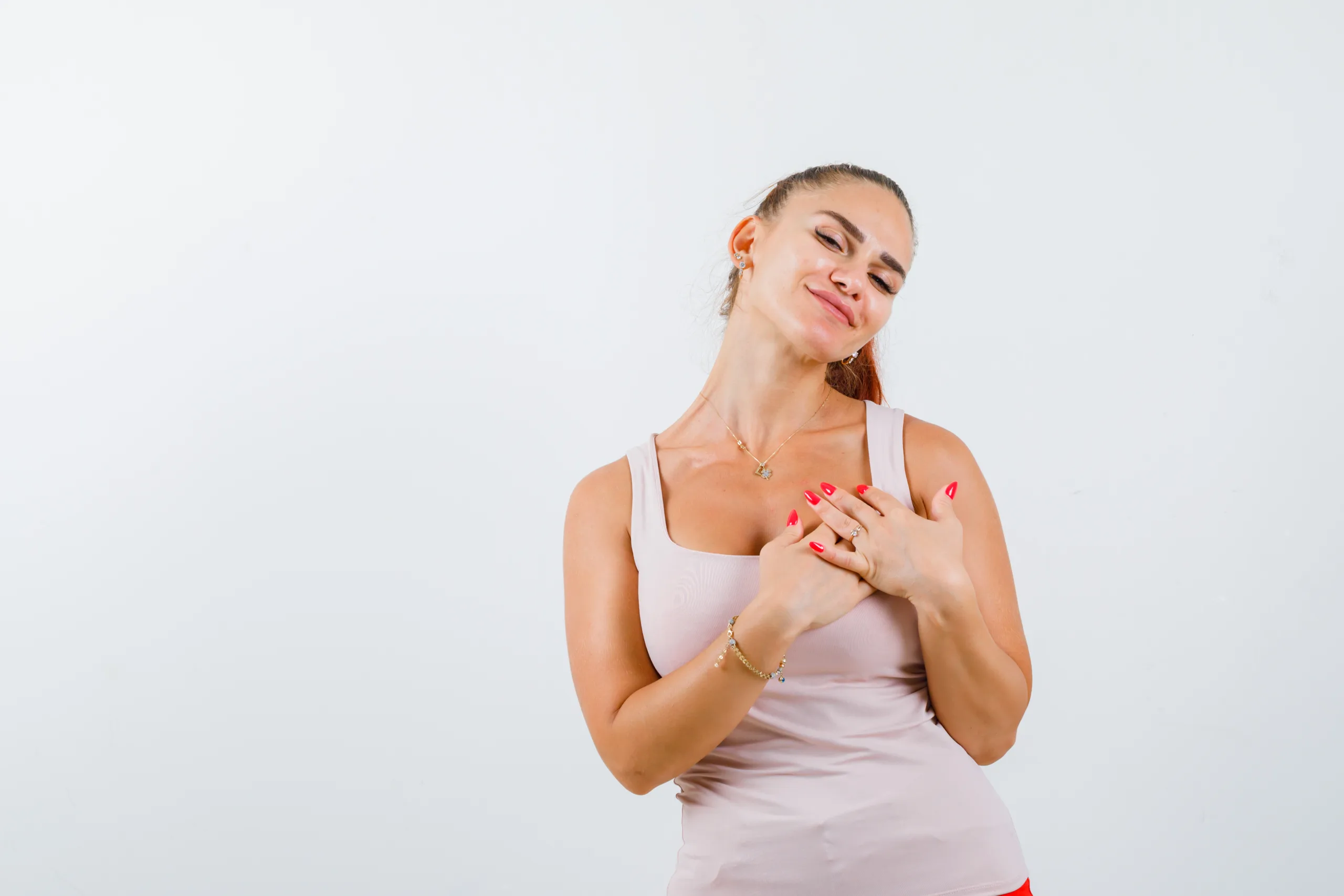Understanding Clogged Pores on the Chest
Clogged pores on the chest, much like those on any other part of the body, are small openings in the skin that get blocked by oil, dead skin cells, and everyday dirt. This blockage can lead to various skin issues, including acne, which manifests as blackheads, whiteheads, and pimples. The chest area, rich in oil glands, is particularly prone to developing clogged pores due to several factors.
Why Do Pores Get Clogged?
Pores become clogged when the natural oil (sebum) produced by our skin, along with dead skin cells, accumulates in the pores instead of being expelled. This mixture can harden within the pore, forming a plug that can lead to inflammation and acne. Factors contributing to this process include:
- Genetics: Just like other physical traits, the tendency to develop clogged pores can be inherited from our parents. If your family members have a history of acne or oily skin, you might be more prone to experiencing clogged pores on your chest and other areas.
- Hormonal Changes: Fluctuations in hormones, especially during puberty, menstruation, pregnancy, and menopause, can increase oil production, making the skin more susceptible to clogged pores.
- Diet and Lifestyle: Certain foods, particularly those high in refined sugars and dairy, can trigger an increase in oil production. Additionally, a sedentary lifestyle with little to no exercise can exacerbate skin issues.
- External Factors: Tight clothing, especially during workouts, can trap sweat and oil against the skin, contributing to clogged pores. Similarly, using heavy, oil-based skin care products can block pores further.
Understanding the Impact
Clogged pores on the chest not only affect the skin’s appearance, making it look bumpy and uneven, but can also lead to discomfort and a decrease in self-confidence. Recognizing the factors that contribute to clogged pores is the first step in addressing and preventing them effectively.
Preventive Measures
Preventing clogged pores on the chest involves a combination of good skincare practices, lifestyle adjustments, and mindful choices about what we put on our skin. Here are some effective strategies to keep your chest area clear and healthy:
1. Opt for Breathable Clothing
Wearing tight, non-breathable clothing can trap sweat and oil against your skin, leading to clogged pores. Choose loose, airy fabrics, especially during workouts or in hot weather, to allow your skin to breathe and reduce the risk of blockages.
2. Maintain a Regular Skincare Routine
Keeping the chest area clean is crucial. Use a gentle, non-comedogenic cleanser to wash your chest daily, especially after sweating. This helps remove excess oil and dead skin cells that could clog pores. Remember, harsh scrubbing can irritate the skin, so be gentle.
3. Exfoliate Wisely
Exfoliating helps remove dead skin cells that can clog pores. However, it’s important to exfoliate gently and not too frequently to avoid irritating the skin. Look for products with salicylic acid, which is effective at clearing pores without being too harsh.
4. Choose the Right Products
Be mindful of the skincare and cosmetic products you use on your chest. Opt for oil-free, non-comedogenic products that won’t clog pores. This includes moisturizers, sunscreens, and body washes. If you’re unsure, check the product labels or consult with a dermatologist.
5. Watch Your Diet
While the link between diet and acne isn’t fully understood, some studies suggest that certain foods can exacerbate skin issues. Try to limit foods high in refined sugars and dairy, as they may trigger oil production. Instead, focus on a balanced diet rich in fruits, vegetables, and whole grains.
6. Manage Stress
Stress can worsen skin conditions, including clogged pores. Incorporate stress-reduction techniques such as yoga, meditation, or deep-breathing exercises into your daily routine. Managing stress not only benefits your skin but also your overall well-being.
7. Stay Hydrated
Drinking plenty of water helps keep your skin hydrated and healthy. Hydrated skin is less likely to produce excess oil, which can contribute to clogged pores. Aim for at least 8 glasses of water a day to support your skin’s health.
Home Remedies and Over-the-Counter Solutions
Treating clogged pores doesn’t always require a visit to the dermatologist. Many effective remedies can be found right at home or in your local pharmacy. Here’s how you can start treating clogged pores on your chest with simple, empowering steps:
1. Aloe Vera
Aloe vera is known for its soothing and anti-inflammatory properties. Applying aloe vera gel to the chest can help calm irritated skin and reduce inflammation associated with acne. It’s also hydrating, which is beneficial for maintaining balanced skin.
2. Tea Tree Oil
Tea tree oil has natural antibacterial and anti-inflammatory properties, making it an excellent choice for treating acne-prone skin. Dilute a few drops of tea tree oil with a carrier oil (like coconut or jojoba oil) and apply it to the affected area to help reduce inflammation and clear clogged pores. Remember, a little goes a long way, and it’s important to do a patch test first to avoid irritation.
3. Salicylic Acid Products
Over-the-counter products containing salicylic acid are effective at penetrating and clearing clogged pores. Look for cleansers, toners, or spot treatments with salicylic acid as an active ingredient. These products help exfoliate the skin, removing dead skin cells that can lead to clogged pores.
4. Benzoyl Peroxide
Benzoyl peroxide is another over-the-counter option that’s effective against acne-causing bacteria. It helps prevent clogged pores by killing bacteria and reducing inflammation. Available in various concentrations, it’s advisable to start with a lower strength to see how your skin reacts.
5. Gentle Exfoliation
Regular, gentle exfoliation can help remove dead skin cells that contribute to clogged pores. Use a soft washcloth or a mild exfoliating scrub designed for sensitive skin. Avoid over-exfoliating, as this can irritate the skin and exacerbate acne.
6. Non-comedogenic Moisturizers
Keeping your skin hydrated is key, even for acne-prone skin. Choose non-comedogenic moisturizers that hydrate without clogging pores. These moisturizers help maintain the skin’s barrier without adding excess oil.
7. Keep Clean and Dry
After sweating or wearing tight clothing, take a shower and change into clean, dry clothes as soon as possible. This prevents sweat and bacteria from sitting on the skin and contributing to clogged pores.
Professional Treatments
For individuals who find that home remedies and over-the-counter solutions aren’t fully addressing their clogged pores, professional treatments offer a more intensive approach. These treatments, performed by dermatologists or skincare professionals, can significantly improve the skin’s appearance and health.
1. Chemical Peels
Chemical peels involve the application of a chemical solution to the skin, which exfoliates the top layers, revealing fresher, clearer skin underneath. Peels can vary in strength and are effective at treating clogged pores, acne, and uneven skin tone. Your dermatologist can recommend the type of peel that’s best suited for your skin’s needs.
2. Microdermabrasion
Microdermabrasion is a non-invasive procedure that exfoliates the skin’s surface to remove dead skin cells and promote new cell growth. It’s particularly effective for clogged pores, as it helps clear out debris and oil that contribute to acne. This treatment can also improve skin texture and brightness.
3. Laser Therapy
Laser treatments target the deeper layers of the skin, promoting healing and collagen production without damaging the surface. For clogged pores and acne, laser therapy can reduce oil production, kill acne-causing bacteria, and diminish the appearance of scars.
4. Prescription Medications
In cases where acne is persistent, a dermatologist may prescribe medications to help manage the condition. These can include topical retinoids, which accelerate cell turnover to prevent clogged pores, and oral medications like antibiotics or isotretinoin for more severe acne.
5. Extractions
Performed by a skilled professional, extractions involve the careful removal of clogs and blockages from the pores. This process can provide immediate relief from blackheads and whiteheads, though it’s important to follow up with proper skincare to prevent future clogging.
Empowerment Through Professional Care
Seeking professional treatment can be a wise step towards achieving clear, healthy skin. It’s important to consult with a dermatologist who can assess your skin’s specific needs and recommend a personalized treatment plan. Remember, professional treatments can offer significant improvements, but maintaining those results requires a commitment to good skincare practices at home.
Read also : Excessive Sugar Consumption: How It Affects Your Skin
Lifestyle Changes for Healthier Skin
Achieving and maintaining clear skin extends beyond topical treatments and professional interventions; it also involves adopting healthier lifestyle habits. Here are some empowering lifestyle changes that can significantly impact the health of your skin, particularly in preventing clogged pores on the chest.
1. Balanced Diet
What you eat can reflect on your skin. Incorporating a diet rich in fruits, vegetables, whole grains, and lean proteins can promote healthier skin. Foods high in antioxidants, such as berries, nuts, and green leafy vegetables, can help fight inflammation and support skin renewal. Limiting intake of sugar, dairy, and processed foods may also reduce breakouts and improve overall skin health.
2. Adequate Hydration
Staying hydrated is crucial for maintaining the skin’s elasticity and preventing excess oil production. Aim to drink at least 8 glasses of water a day. Hydrated skin is less prone to clogging and acne. Additionally, consider hydrating your skin from the outside with non-comedogenic moisturizers.
3. Regular Exercise
Regular physical activity increases blood flow, nourishing skin cells and helping to carry away waste products, including free radicals, from working cells. Just remember to shower and change out of sweaty clothes promptly after exercising to prevent sweat and bacteria from clogging pores.
4. Stress Management
High stress levels can trigger the skin to produce more oil, which can lead to clogged pores. Incorporating stress-reduction techniques such as yoga, meditation, deep breathing exercises, or even regular physical activity can help manage stress levels and may lead to clearer skin.
5. Sleep Quality
Getting enough quality sleep is essential for skin health. During sleep, your skin’s blood flow increases, and the organ rebuilds its collagen and repairs damage from UV exposure, reducing wrinkles and age spots. Aim for 7-9 hours of quality sleep per night to support your skin’s natural repair processes.
6. Sun Protection
Excessive sun exposure can damage the skin, leading to premature aging and increasing the risk of clogged pores and acne. Use a broad-spectrum sunscreen with at least SPF 30 daily, even on cloudy days, and consider wearing protective clothing or seeking shade during peak sun hours.
Final words by MyHealthPage
Achieving clear skin, especially when dealing with clogged pores on the chest, is a multifaceted journey that combines effective skincare practices, professional treatments, and healthy lifestyle choices. Understanding the causes and implementing preventive measures can significantly reduce the occurrence of clogged pores. For those instances when home remedies and over-the-counter solutions fall short, professional treatments offer a deeper level of care that can address persistent skin issues.
Sources :
- https://www.westlakedermatology.com/blog/clogged-chest-pores/
- https://www.womenshealthmag.com/beauty/a19932489/how-to-get-rid-of-chest-acne/
- https://www.byrdie.com/how-to-get-rid-of-chest-acne
- https://my.clevelandclinic.org/health/diseases/22773-clogged-pores
- https://www.medicalnewstoday.com/articles/clogged-pores
- https://www.mayoclinichealthsystem.org/hometown-health/speaking-of-health/the-facts-about-chest-acne
- https://www.medicalnewstoday.com/articles/322554
Image by 8photo on Freepik
Disclaimer : The information provided on this website/document is not a substitute for professional medical advice, diagnosis, or treatment. If you have any questions or concerns about your health, please consult with a licensed physician or other qualified healthcare provider.






